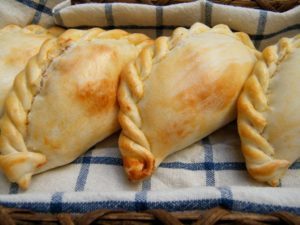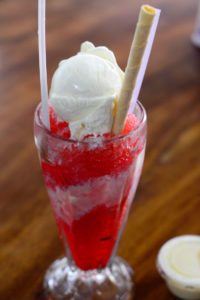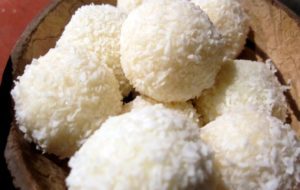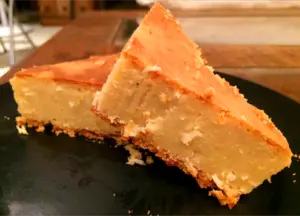In Spanish, It is often said that love comes through the mouth, on Valentine’s Day, when the day of friendship and lovers is commemorated what could be better than showing love with a delicious dessert, let’s see what are the traditional desserts of Costa Rica.
The secret of the flavor of a region is found in its desserts. Costa Rica, a Caribbean country with a deliciously tropical climate and a large number of exotic fruits, is characterized by its unique and fascinating desserts. Some well-known, others with a very distant tradition.
The cuisine of Costa Rica brings together the customs and culinary uses of the inhabitants of that country and is part of their identity as a nation. With the contribution of three main cultural influences: the aborigine, the European and the African, the Costa Rican Creole cuisine has been constituted as a mixture, where what is cooked in the pre-Columbian comal is mixed with the creative contribution of African culture and many other peoples who have arrived in the Republic from parts of Europe, Asia and America.
Due to its geographical position at the center of two large hemispheric masses, throughout its history Costa Rica has been a biological and cultural bridge between the north and south of the American continent, producing in its small territory an encounter of flora and fauna that has generated an exuberant range of food products; also enriched with all the fruits of the sea because its coasts are bathed by the Caribbean Sea and the Pacific Ocean.
In regard to the tradition of Costa Rican desserts, in Valle Central are used as main ingredients milk, sugar cane, egg and many fruits and vegetables such as chiverre, mandioca and ayote; in Limón, desserts based on coconut and banana are more characteristic, with the English influence being found in the preparation of bread, cakes and cookies; in Guanacaste the main ingredient is corn; and in Puntarenas milk, coconut and fruits are used.
Desserts have always been the highlight of a meal. A good dessert will highlight the satisfaction of previous foods. In many cases, they are planned as a pleasant surprise, but they also constitute an important complement to the contribution of nutrients in the daily diet. They contain nutritious elements such as fruits, milk, eggs and energy elements such as sugars and fats. Among the most outstanding desserts of the Costa Rican food can be noted:
Chiverre Empanadas

It is perhaps the most traditional tico pastry. It is present especially during the celebrations of Holy Week, but it is also consumed throughout the year. The chiverre empanadas are prepared with a dough of wheat flour with touches of cinnamon kneaded and cut into circles the size of a glass. Inside this circle is placed the honey filling of chiverre, a vegetable similar to chayote. This chiverre filling is similar to a pumpkin jam with honey.
Churchill

The Churchill or churchil is a variant of the typical frosty or “granizado”. Its history shows the character of the
Costa Rican people, it dates from the decade of the 40s in the center of the city of Puntarenas, w
here a merchant from Puntarenas called Joaquín Agüilar Ezquivel or “Quinico”, as it was popularly known, used to go to the “Paseo de los turistas” of the city and buy a “granizado” with different ingredients. The merchants of the area, seeing the exotic ingredients that Don Joaquin asked for his ” granizado”, decided to name the peculiar “granizado” as Churchill, due to the similarity that Mr. Joaquin had with the emblematic British politician, Winston Churchill.
The delicious invention that came out of Puntarenas is the most traditional in the whole country. It consists of grated ice, syrup, condensed milk, milk powder, ice cream and waffles.
Coconuts Cajetas
Coconuts cajetas or “Cajetas de coco” are prepared from a soft cream of butter, condensed milk and grated coconut, all cooked over low heat until it turns golden. This mixture is complemented with crushed dried cookies to add texture. When finished the dough are lined with grated coconut. The fresher the coconut is, the better flavor it will have since if it stays stored for a long time it can lose its aroma. This simple dessert to prepare is the favorite to cook with the family, and is the best example of Costa Rica’s Caribbean flavor.

Roasted tamal
The term tamal comes from the Nahuatl language (Tamalli) and means wrapped. It is the generic name with which several American dishes of indigenous origin are known. The Tamals are well known in Central America, as a heritage of the Mayan culture, but most of them are salty dishes. These roasted tamals are usually made with cooked corn dough and wrapped in ear or banana leaves. The roasted tamale is one of the oldest dessert recipes. Traditionally, it is cooked in a thick hole covered in banana leaves.

